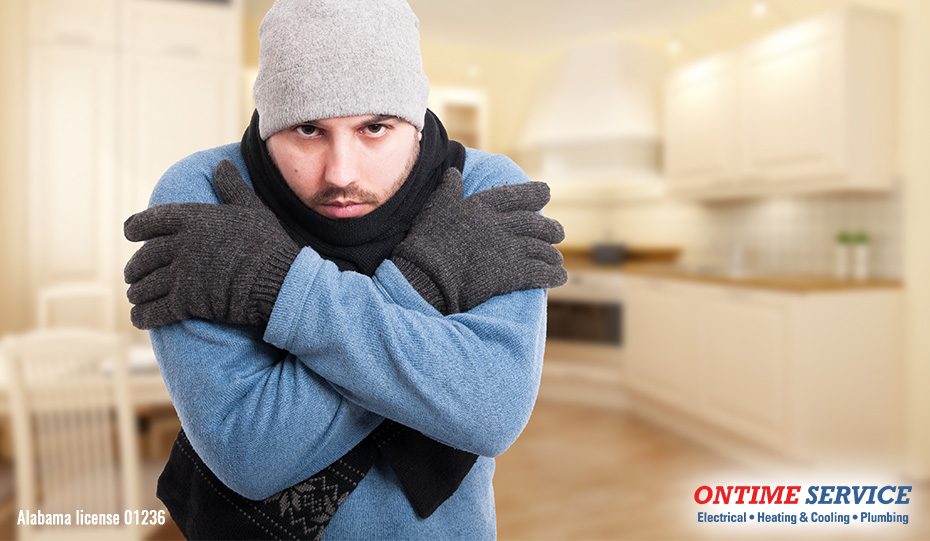If you’re a homeowner with a functioning air conditioning system, you probably have a rough idea of what refrigerant is. Most likely, you’re aware that refrigerant is something a technician puts in your AC from time to time. But that’s probably where your knowledge ends—unless you’re an HVAC technician or someone who likes to google HVAC terms.
It’s important you understand the basics of your AC system so you can be a well-informed homeowner. Understanding basic HVAC components is the first step to preventing costly repairs and silly mistakes that could lead to long-term damage. The pros at OnTime Service have prepared a quick and helpful guide to tell you a little more about a vital part of your AC called refrigerant.
What Is Refrigerant?
Refrigerant is a coolant that plays an incredibly important role in keeping your home nice and cool on hot summer days. Your AC doesn’t “create” cooling air, rather it uses refrigerant looping through the evaporator, condenser and compressor to absorb and remove heat from your home. To give you a better idea about the vital role it plays, here’s a step-by step-guide to how this coolant loops through your AC:
When indoor air enters your AC system, it blows over the evaporator coil which has cool, liquefied refrigerant in it. The refrigerant absorbs the heat from the air and vaporizes. The indoor air is now cooler, and a fan blows it back into your home. The vapor then makes its way to the compressor located in the outdoor condensing unit.
The compressor then raises the pressure and temperature of the vaporized refrigerant pushing it to the condenser.
When the pressurized gas moves to the condenser, it condenses into cool liquid and heat is radiated from the process and dissipated in the outdoor air with the help of fans. The refrigerant loops back to the evaporator coil, ready to go through the process again.
What Happens If I Run Out of Refrigerant?
Your AC system is a closed loop system—as in, it is built not to lose refrigerant. So, if you are low in refrigerant, chances are you are dealing with a leak of some kind. Direct exposure to it can lead to dangerous health risks which is why you shouldn’t handle it yourself. According to the Environmental Protection Agency, the law requires that a certified professional HVAC technician handle the coolant.
To check if your AC is low on refrigerant, there are some signs you will need to look out for:
Your AC vents are blowing hot or lukewarm air
The evaporator coil looks frozen
You hear a noticeable hissing noise from refrigerant lines
You see a sharp increase in your electricity bills—an AC running on little refrigerant will have to run constantly to provide enough cooling for your home, leading to an increase in electricity use.
What Is the “R22 Phaseout?”
R22 is the standard type of refrigerant used in air conditioners. It is also referred to as R-22 Freon, HCFC Freon or HCFC-22. R22 and another refrigerant, R142b (HCFC 142B) are both hydrofluorocarbons, which have been classified as ozone-depleting substances by the Environmental Protection Agency. Since 2010, the EPA began the R22 phaseout, which was essentially a “ban on production, import and use of R-22 and R-142B except for continuing servicing needs of existing equipment.” By 2020, the servicing systems of R-22 will rely on recycled or stockpiled quantities.
Since the supplies of R-22 and R-142B are decreasing, the prices of refilling or recharging refrigerant are increasing. If your AC is using R-22 (you can check by looking at the nameplate on the unit) you might want to consider a new, energy-efficient AC system for the future which relies on alternatives such as R-143A, R407C and R-410A.
Need an HVAC Professional? Contact OnTime Service!
While refrigerant is an important part of your AC system, it is also a dangerous chemical that must be handled by a professional. When looking for an HVAC professional, look no further than OnTime Service! Our technicians are knowledgeable and enthusiastic and will address any questions and concerns you have about your AC system. Get in touch by calling us at 251-272-3595 or by filling out a service request form on our website!

